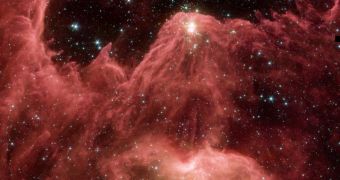One of the things that initiate the collapse of molecular hydrogen clouds into protostars is the fact that the massive structures exceed a critical density threshold. Astronomers call this limit the Jeans mass, and recently they discovered that some stars from outside the influence of this criterion.
There are many ways in which new stars can appear, in the sense that a vast number of processes contributes to triggering their formation. However, two influences stand out as playing a far greater influence than others.
The first one is the Jeans mass itself. When a hydrogen cloud exceeds this critical density threshold, it collapses under the action of its own gravity, collapsing towards a central point and producing great amounts of friction in the process.
This friction builds up temperatures to such a point that the clouds eventually ignite, jump-starting nuclear fusion, and producing a protostar. However, not all new stellar objects form in this manner.
In some cases, the Jeans mass is not reached because the cloud is forced to collapse before it gathers enough density to do so on its own. Supernova explosion shock waves are the most common factors that trigger the premature collapse of molecular clouds.
Additionally, tidal influences from nearby stars, neutron stars, black holes, or other clouds might also force the clouds to collapse. Astronomers hypothesize that other processes may be contributing to triggering these events as well, Universe Today reports.
Over the past few years, studies have begun evidencing stellar objects that appear to form in a way that has little to do with the Jeans mass limit. Until recently, all observations were in line with this theoretical prediction.
The regions and densities in which these protostars form cannot be explained using this criterion. For example, the star IRAM 04191 was found collapsing in the Taurus Molecular Cloud, but the object displays little luminosity. It belongs to a class known as Very Low Luminosity Objects (VeLLO).
After the NASA Spitzer Space Telescope launched, astronomers found other stars (L1014-IRS, L1521F-IRS, L328-IRS, and L1148-IRS) that displayed the same traits. All of these objects were about 1/10th the mass of the Sun, and tended to be only tens of thousands of years old.
In some cases, astronomers found that certain portion of the molecular clouds were collapsing at different paces than the rest of the structures. The reason why this happens is still pretty much unknown and astronomers plan to conduct more studies to determine what's going on in these stellar nurseries.

 14 DAY TRIAL //
14 DAY TRIAL //